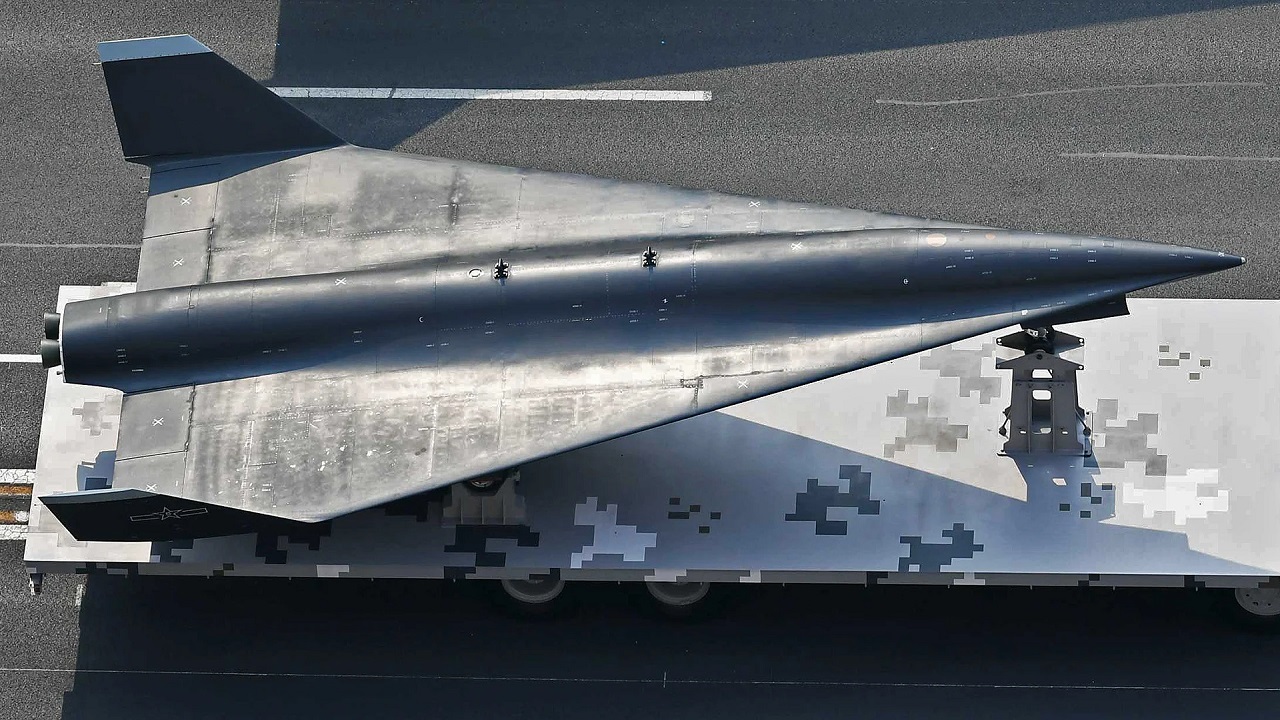The MD-19, a purportedly hypersonic unmanned aerial vehicle, is likely an iterative development of China’s wide array of unarmed drone reconnaissance platforms.
This newer UAV is known from a video captured from the drone’s mothership as the drone is released, powering through an initial flight sequence and raising airbrakes and flaps for a landing.
Some of MD-19’s outside features are relatively easy to see and speak to low-observability and incredibly rapid speed. A canted V-tail is a feature often used in stealth fighters to reduce their radar cross-section, a measure of radar detectability.
Additionally, the drone seems to lack air intakes and is likely powered by rocket motors. It also sports tricycle-style landing gear, though the MD-19’s nose strut features two wheels.
The exact specifications of the MD-19, production quantity, and other relevant figures are unknown. However, China is rapidly making progress in its aerial capabilities.
China Wants New Hypersonic Drones
China has recently made significant strides in its various unmanned aerial vehicle programs. Last year, a People’s Liberation Army Air Force H-6MW bomber was photographed in flight with an air-launched vehicle carried underneath the fuselage.
The strategic bomber had previously been seen as a launch platform for China’s WZ-8 supersonic high-altitude unmanned aerial vehicle, which is used for reconnaissance of targets across Asia.
Janes, a defense intelligence publication, explains that the WZ-8 is powered by “two liquid-fuelled (possibly hydrazine-based) rocket engines, the WZ-8 has two outward canted fins on the wingtips as well as what appears to be a conformal synthetic aperture radar under its wings and dorsal satellite communication or navigation antennas … The WZ-8 is estimated to have a length of between 11.5 and 13 m and a wingspan of between 4.5 and 6.7 m.”
Janes adds, “The WZ-8 is operational with the PLAAF’s 30th Air Regiment, operating from Luhe-Ma’an Air Base near Nanjing.”
However, the UAV slung under the bomber was different from the WZ-8, indicating that the Aviation Industry Corporation of China, the Chinese conglomerate behind the design, was testing and evaluating a new drone design, potentially with supersonic or perhaps hypersonic capabilities.
Leaked U.S. military intelligence documents shed light on the H-6M and drone combination and highlighted the potential utility of a supersonic or hypersonic drone for China in spying on countries in its near-abroad. In addition to peeking in on the activities in Taiwan, the embattled island democracy off the Chinese coast, a drone like the WZ-8 or similar unmanned aerial vehicles have the potential to spy on South Korea quickly as well.
The intelligence paper indicated that the imaging area of a single WZ-8 would cover nearly all of Taiwan and about half of South Korea. In this role, a supersonic or hypersonic unmanned aerial vehicle would serve in a similar role as the SR-71 Blackbird, which conducted reconnaissance flights over the Soviet Union during the Cold War and relied on incredibly high speeds to avoid Soviet air defenses.
Today’s air defenses would struggle to effectively engage hypersonic platforms over Taiwan or South Korea, particularly if China’s hypersonic vehicles are at all maneuverable.
Regional Dynamics and Balance of Power
When information about the WZ-8 came to light, Dean Cheng, a nonresident senior fellow with the Potomac Institute for Policy Studies, told the Washington Post that the UAV changes the military balance throughout the Indo-Pacific region. “This is not just aimed at the United States or South Korea,” Cheng said. “Japan has to worry about it. India has to worry about it. All Southeast Asia has to worry about it.”
The potential applications for hypersonic drones like the WZ-8 are myriad, and combined with the People’s Liberation Army Navy‘s expanding fleet of ships, growing anti-satellite capabilities, and advanced, fifth-generation fighters and stealth bombers, they represent a potent and growing suite of capabilities.
“Individually, none of these things are game-changers,” Cheng said. However, if “taken together, we’re looking at a PLA that is developing a reconnaissance strike complex: Find the enemy, hit the enemy, kill the enemy.”
What Happens Now?
The hard facts on the MD-19, as well as other similar Chinese aircraft, are paltry. Aside from the general contours of capabilities gleaned from video and images online, the dearth of information about China’s supersonic and hypersonic reconnaissance aircraft makes assessments difficult.
What is clear, however, is that China is investing in a rapidly deployable and, thanks to incredibly fast speeds, survivable reconnaissance fleet with the potential to alter military strength in the Indo-Pacific region further in China’s favor.
About the Author: Caleb Larson
Caleb Larson is an American multiformat journalist based in Berlin, Germany. His work covers the intersection of conflict and society, focusing on American foreign policy and European security. He has reported from Germany, Russia, and the United States. Most recently, he covered the war in Ukraine, reporting extensively on the war’s shifting battle lines from Donbas and writing on the war’s civilian and humanitarian toll. Previously, he worked as a Defense Reporter for POLITICO Europe. You can follow his latest work on X.

